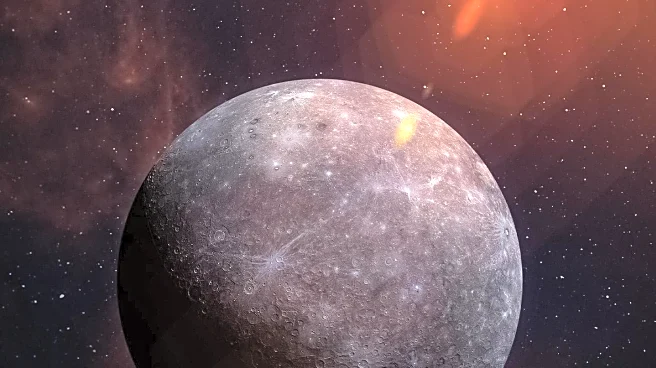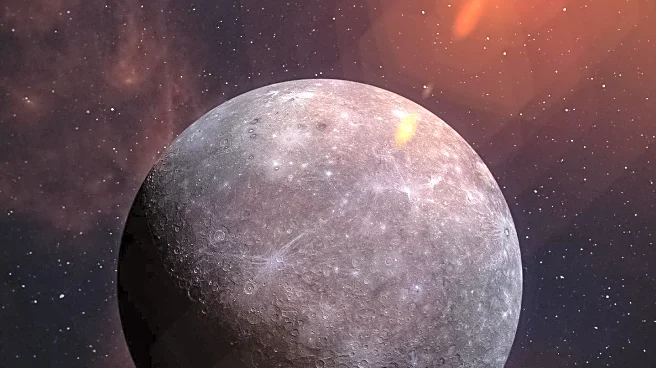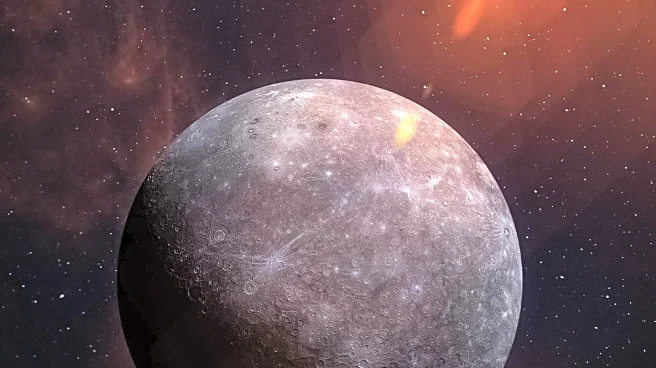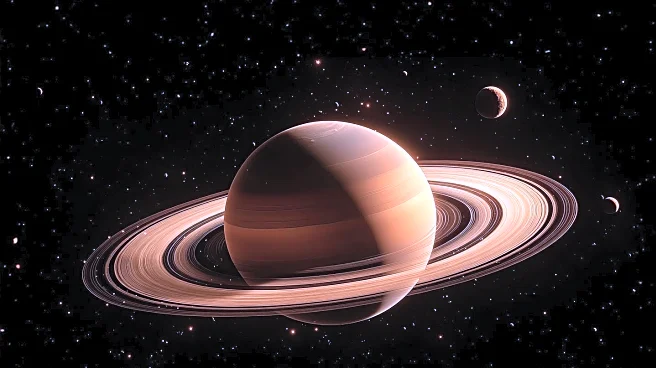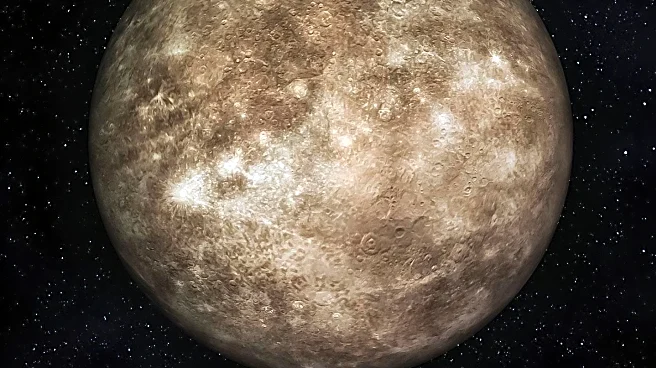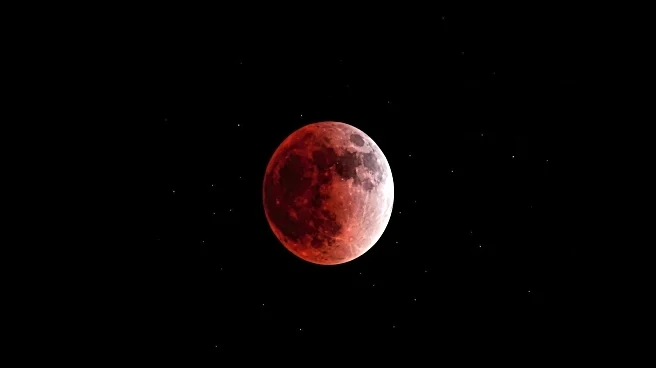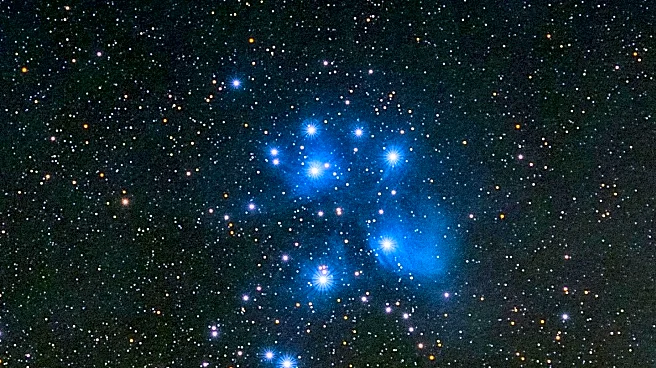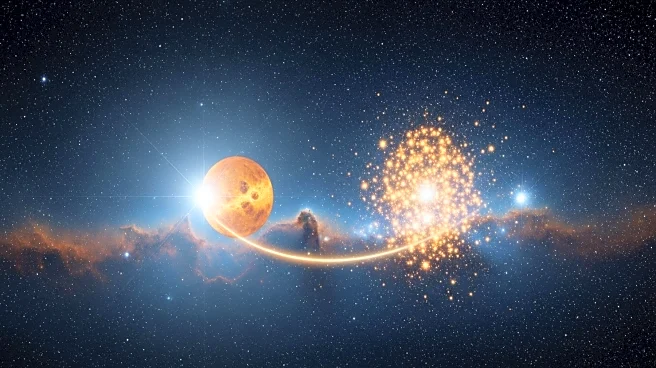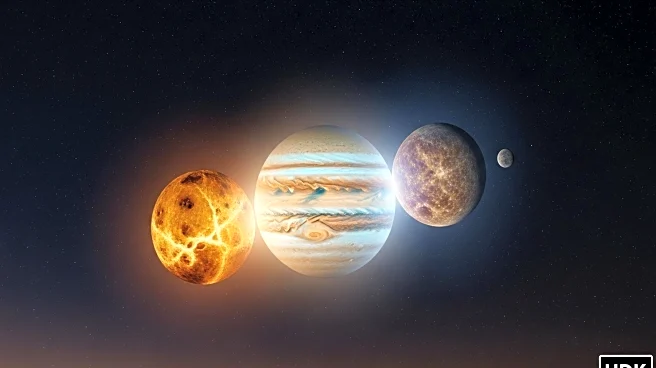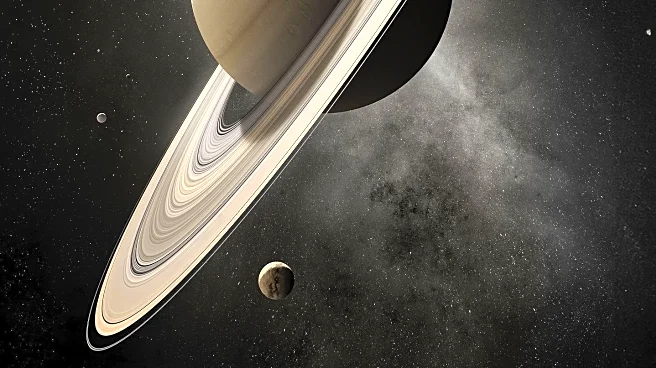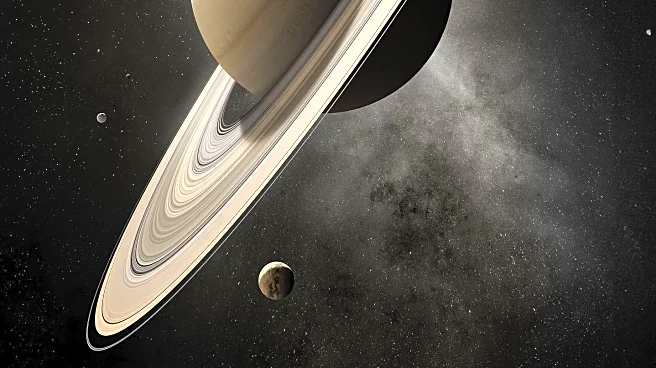What's Happening?
On September 2, 2025, the bright planet Mercury will pass the star Regulus in the constellation Leo just before sunrise. This astronomical event will be visible in the eastern sky from locations with clear horizons. Mercury, with a magnitude of -1.3, will be positioned 1.2° north of Regulus, which has a magnitude of 1.4. Observers may need binoculars or telescopes to view Regulus due to its lower brightness compared to Mercury. The event occurs at 6 A.M. EDT, with Mercury reaching an altitude of 4° approximately 30 minutes before sunrise. Venus will also be visible, appearing to the lower left of Mercury. Observers are advised to cease using optical instruments several minutes before sunrise to avoid damage from the sun's rays.
Why It's Important?
This celestial event provides a unique opportunity for astronomers and sky enthusiasts to observe Mercury and Regulus in close proximity. Such events are significant for educational purposes and for fostering interest in astronomy. Observing Mercury, which is often difficult due to its proximity to the sun, can offer insights into planetary motion and visibility conditions. The event also highlights the importance of clear skies and unobstructed horizons for successful astronomical observations. It serves as a reminder of the dynamic nature of the night sky and the ongoing opportunities for discovery and learning.
What's Next?
Following this event, observers can look forward to other astronomical occurrences throughout September, including Saturn and Neptune reaching opposition, and Jupiter and Venus visible at dawn. These events offer further opportunities for observation and study, encouraging continued engagement with astronomy. As the month progresses, sky watchers can anticipate changes in visibility and positioning of celestial bodies, providing a dynamic and evolving view of the night sky.
Beyond the Headlines
The event underscores the importance of astronomy in understanding our universe and the celestial mechanics that govern planetary movements. It also highlights the role of technology, such as telescopes and binoculars, in enhancing our ability to observe and appreciate these phenomena. The cultural and educational impact of such events can inspire future generations to explore scientific fields and contribute to our understanding of space.
